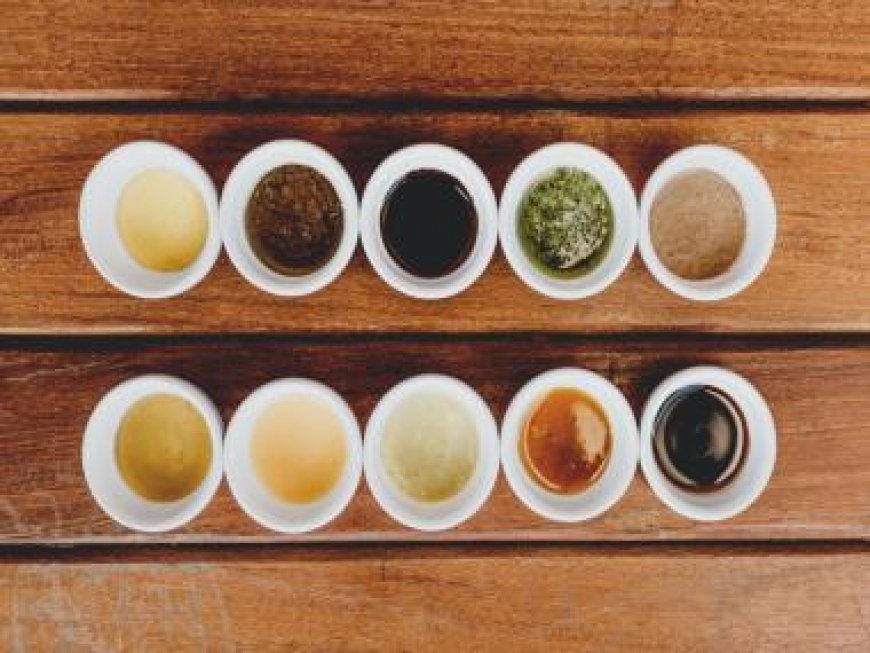Science of Sauces: Choosing and Preparing Condiments for Your Culinary Masterpieces
Science of Sauces: Choosing and Preparing Condiments for Your Culinary Masterpieces

Sauces are the unsung heroes of the culinary world, elevating a dish from ordinary to extraordinary with their unique flavors and textures. Whether you’re a seasoned chef or a home cook experimenting in the kitchen, understanding the food science behind sauces can significantly enhance your culinary creations. In this exploration of the art and science of sauces, we’ll delve into how to choose and prepare condiments to complement specific dishes at home.
1. The Foundation: Know Your Base Sauces
Before delving into the specifics, it’s crucial to understand the foundation of many sauces. Classic French cuisine, for example, recognizes five mother sauces: Béchamel, Velouté, Espagnole, Hollandaise, and Tomato. Each of these serves as a base for countless variations, forming the backbone of sauce preparation.
- Béchamel: Made with milk, butter, and flour, Béchamel is the starting point for creamy sauces like Alfredo and Mornay.
- Velouté: This sauce involves a roux (butter and flour) combined with a light stock, creating a base for seafood and poultry sauces.
- Espagnole: Known as brown sauce, Espagnole is rich and hearty, often used in dishes like stews and gravies.
- Hollandaise: An emulsified sauce made with egg yolks and clarified butter, Hollandaise is perfect for eggs Benedict and asparagus.
- Tomato: As the name suggests, this sauce is tomato-based and serves as the foundation for pasta sauces, pizzas, and many Mediterranean dishes.
2. Understanding Flavor Profiles: Sweet, Sour, Salty, Bitter, Umami
Every successful sauce strikes a balance between the five basic taste sensations. Understanding these flavor profiles will help you tailor your condiments to enhance specific dishes.
- Sweet: Sugars in the form of honey, maple syrup, or brown sugar can add sweetness to barbecue sauces, teriyaki glazes, or even a balsamic reduction.
- Sour: Citrus fruits, vinegars, and acidic ingredients like tomatoes provide the sour element in sauces. Consider a lemon-infused vinaigrette or a classic marinara.
- Salty: Soy sauce, miso, or even anchovies can introduce saltiness to your sauces. This is essential for balancing sweetness and enhancing other flavors.
- Bitter: Ingredients like dark chocolate, coffee, or certain greens contribute bitterness. Bitter elements can add depth to rich sauces, such as those paired with red meats.
- Umami: Often referred to as the savory taste, umami is found in ingredients like soy sauce, mushrooms, and Parmesan cheese. Umami enhances overall flavor and adds complexity to dishes.
3. Pairing Condiments with Dishes
Now that you’ve mastered the basics, let’s explore how to pair condiments with specific dishes for an extraordinary culinary experience.
- Grilled Meats:
- For grilled meats, a bold and smoky barbecue sauce can be a game-changer. The sweetness of molasses, the tanginess of vinegar, and the depth of spices create a perfect balance. Experiment with adding a touch of coffee or dark chocolate for an extra layer of complexity.
- Pasta Dishes:
- Pasta sauces offer endless possibilities. A classic marinara with tomatoes, garlic, and basil is a timeless choice. For cream-based sauces, like Alfredo, incorporate Parmesan or Gruyère cheese for a rich and velvety texture.
- Stir-Fries:
- Stir-fries benefit from sauces that strike a balance between sweet, salty, and umami. Soy sauce, ginger, and garlic can form the base, while a touch of honey or hoisin sauce adds sweetness. Don’t forget a splash of rice vinegar for acidity.
- Salads:
- Salad dressings should enhance, not overpower, the freshness of greens. A simple vinaigrette with olive oil, balsamic vinegar, Dijon mustard, and honey can complement a variety of salads. Experiment with citrus-based dressings for a refreshing twist.
- Seafood:
- Seafood dishes often pair well with citrus-infused sauces. A lemon-butter sauce with capers can elevate the flavor of delicate fish. For a more robust option, a tomato-based sauce with herbs and olives works wonders with shrimp or mussels.
4. Embracing Fusion: Mixing Culinary Traditions
In today’s global culinary landscape, experimenting with fusion sauces can yield exciting results. Combining elements from different cuisines allows you to create unique condiments that reflect your creativity.
- Wasabi-Soy Mayo:
- Blend Japanese flavors by mixing soy sauce with wasabi and incorporating it into mayonnaise. This versatile condiment pairs well with sushi, grilled vegetables, or even as a dipping sauce for fries.
- Chimichurri Pesto:
- Combine Argentine chimichurri with Italian pesto for a vibrant and herbaceous sauce. Drizzle it over grilled meats or use it as a marinade to infuse your dishes with bold flavors.
5. Fresh vs. Cooked Sauces: Timing Matters
Understanding when to use fresh or cooked sauces is crucial. Fresh sauces, like salsa or chimichurri, are best served immediately to preserve their vibrant flavors. Cooked sauces, such as Bolognese or curry, benefit from simmering to allow the ingredients to meld and intensify over time.
In the fascinating world of sauces, a pinch of creativity, an understanding of flavor profiles, and the willingness to experiment can transform your home cooking. Whether you’re crafting a classic béarnaise or concocting a bold fusion sauce, the food science behind condiments is your key to unlocking a world of culinary possibilities. So, roll up your sleeves, grab your whisk, and let the saucy adventure begin in your kitchen!
What's Your Reaction?



























































